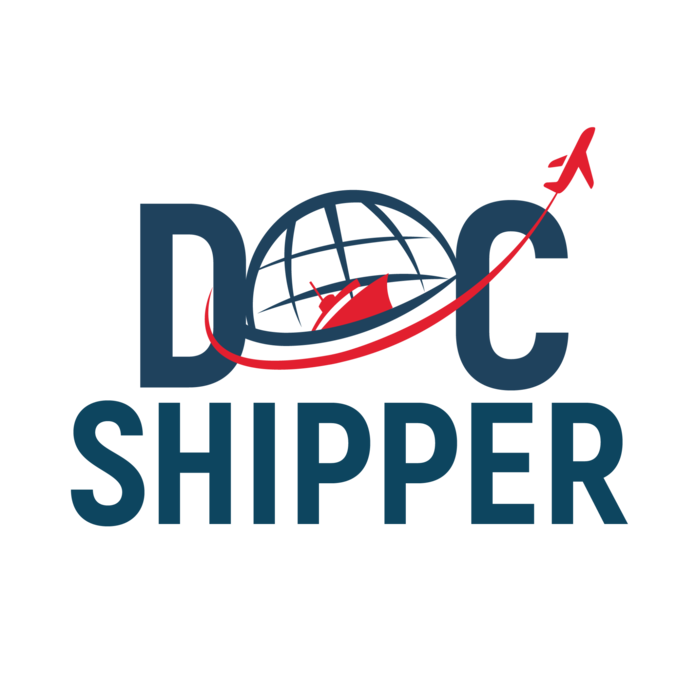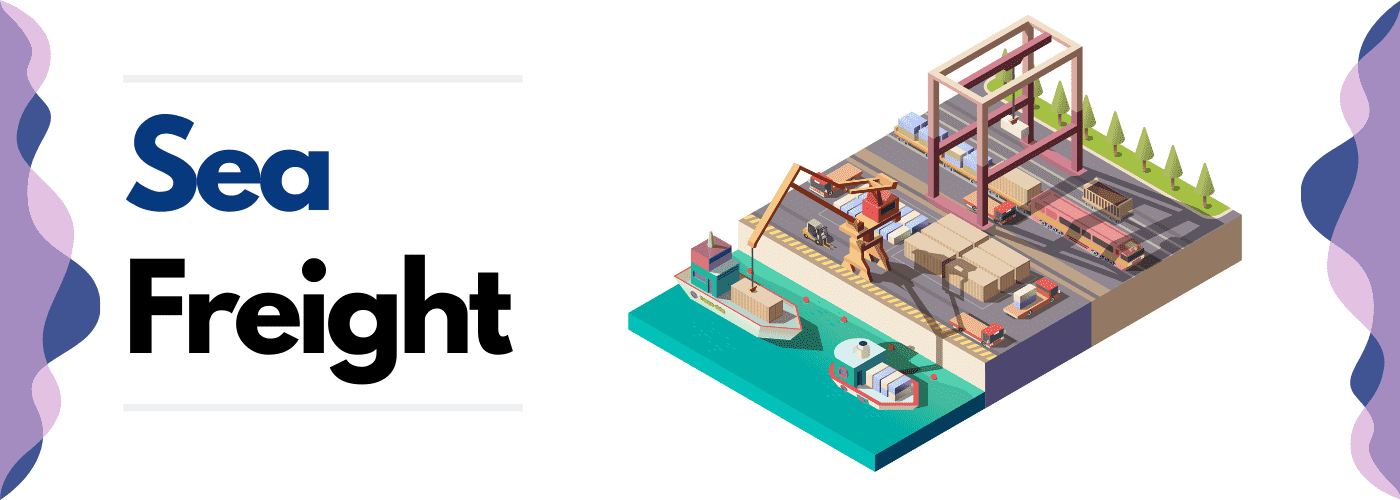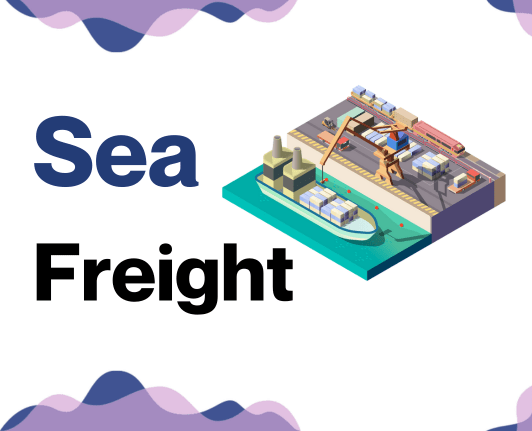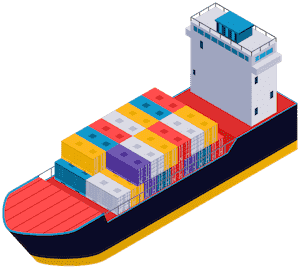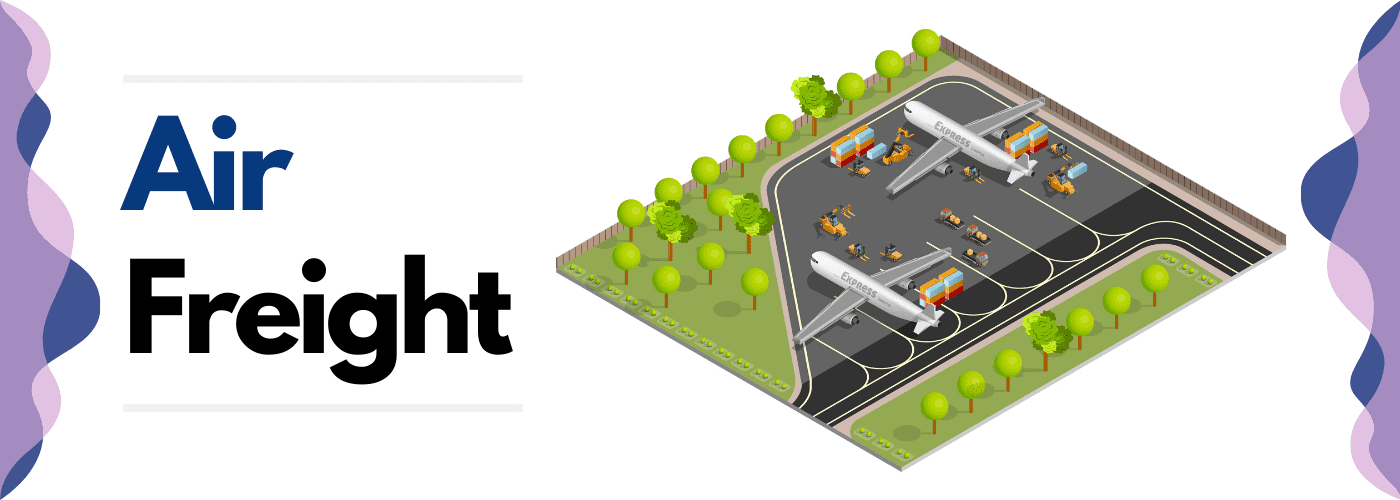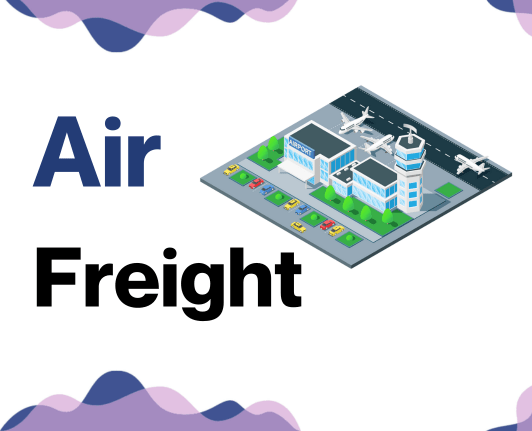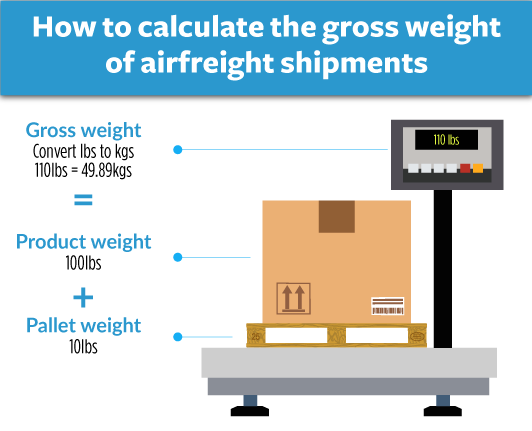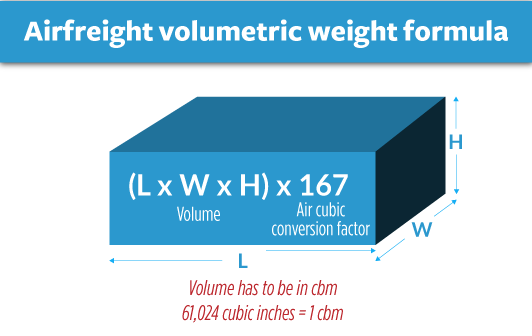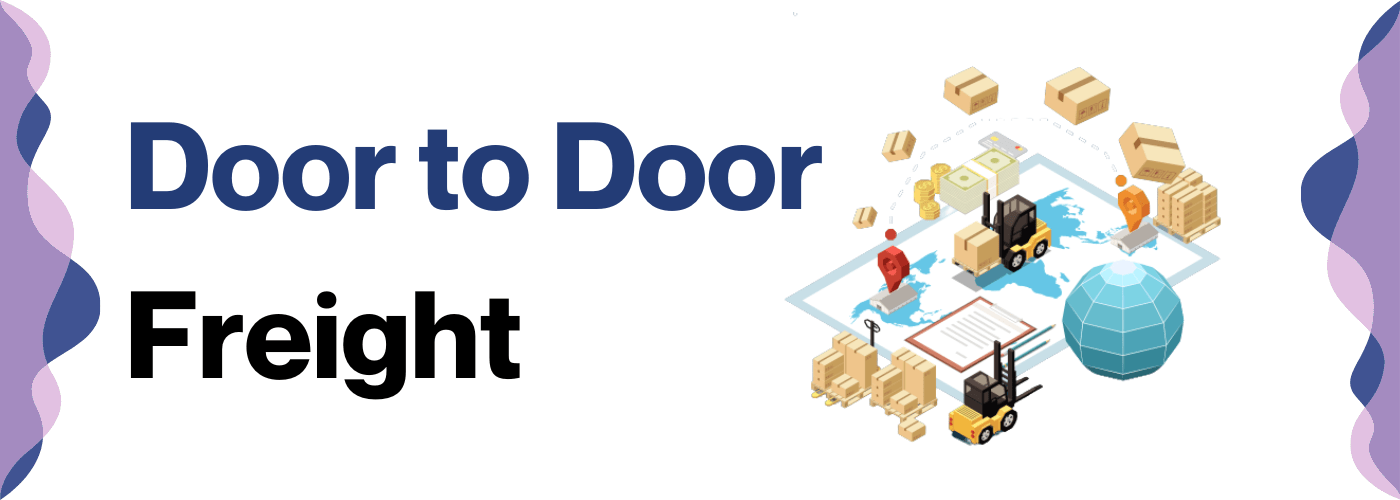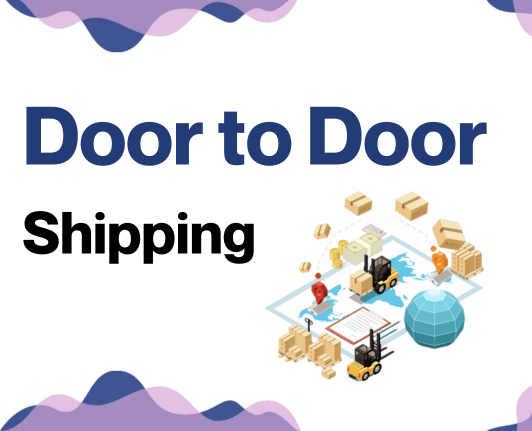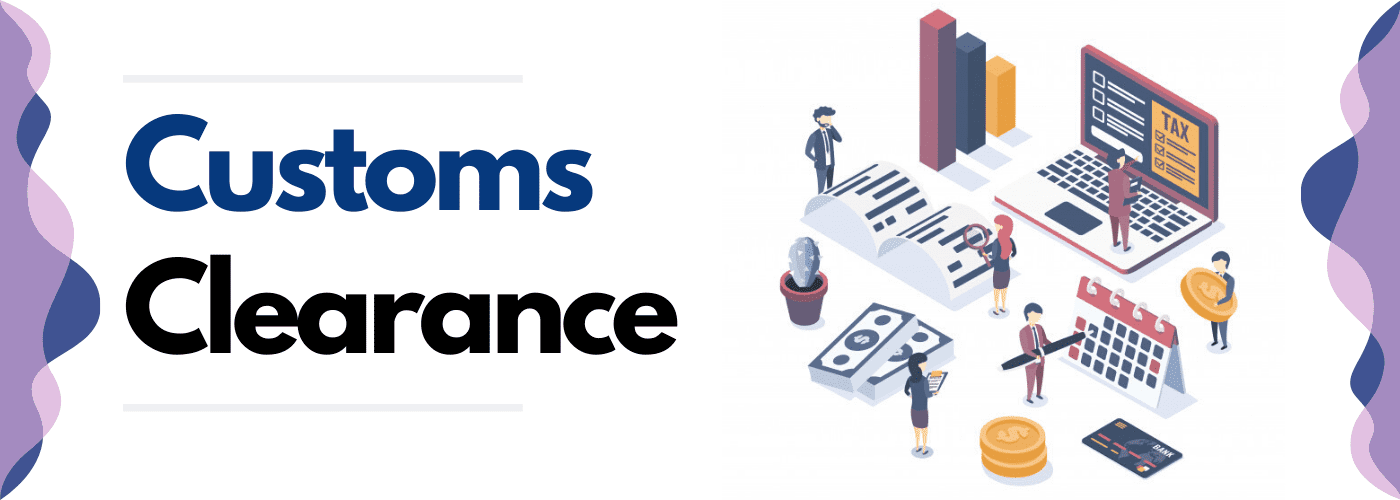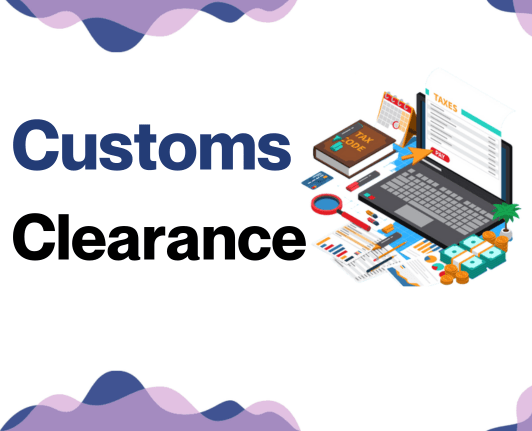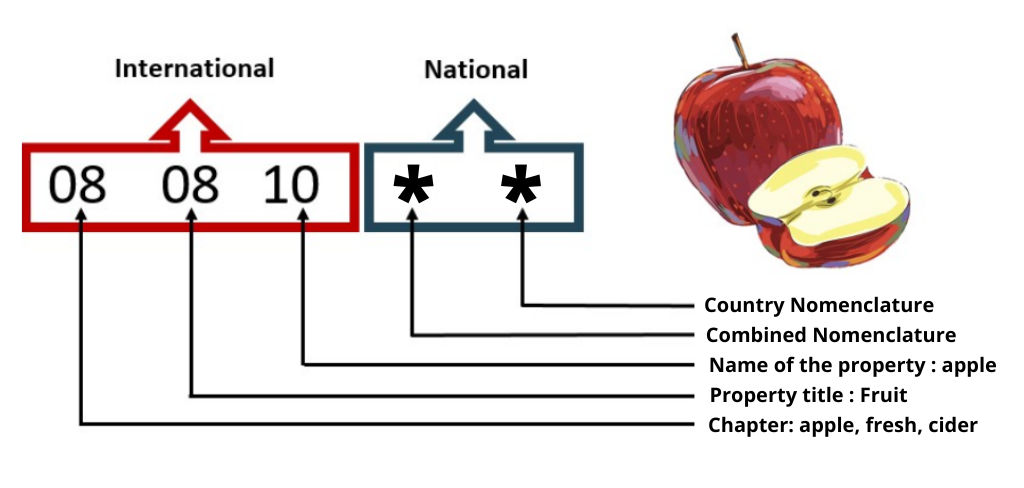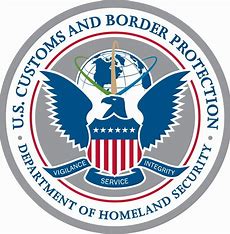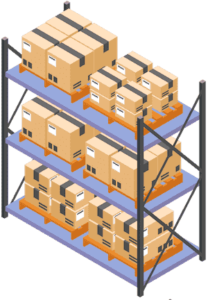So, you think shipping freight between the US and Ireland is as easy as finding a four-leaf clover? Think again! It can be a complex task, especially when you're dealing with the nuances of rate comprehension, deciphering transit times, and unravelling the enigma of customs regulations.
This guide shines a light on these challenging areas and more. It provides an in-depth look into various freight options, demystifies the process of customs clearance, and offers insight into duties, taxes and tailored advice to help your business thrive in these shipping corridors.
You'll find this guide particularly beneficial if you're in the process of expanding business operations across the Atlantic. If the process still feels overwhelming, let DocShipper handle it for you! As your dedicated freight forwarder, we turn these shipping challenges into success stories every day.
Table of Contents
ToggleWhich are the different modes of transportation between US and Ireland?
Wondering about the smartest way to ship goods between the Stars and Stripes and the Emerald Isle? It's like planning a family vacation: you have to consider distance and borders. Sure, we can't drive across the Atlantic, so road and rail are out.
That leaves air and sea freight. Imagine sending a birthday package – you can choose between express (air) or standard (sea). Both offer their pros, so it's about matching the type of your freight, urgency, and budget to choose wisely. Picking the right mode is like choosing the best route for your journey!
How can DocShipper help?
Breaking into the Ireland market from the US? Not sure how to ship your goods safely and efficiently? Let DocShipper assist you! We offer personalized, all-inclusive solutions, managing everything from transport to customs clearance. Don't juggle shipping challenges alone - get in touch for a free estimate in under 24 hours or call our consultants for free advice today. Let's simplify shipping together.
DocShipper Tip: Sea freight might be the best solution for you if:
- You are shipping large volumes or bulky items, as sea freight offers the most space at a cost-effective rate.
- Your cargo doesn't have an urgent deadline, as sea freight typically has longer transit times compared to air or rail.
- Your shipping routes are between major ports, allowing you to leverage the extensive global network of sea shipping lanes.
Sea freight between US and Ireland
Ocean shipping from the US to Ireland is vital to the trade relationship connecting thriving industrial hubs across the Atlantic. Picture bustling cargo ports like New York and Boston on the American side, linking to Dublin and Cork in Ireland, solidifying this transoceanic bond. Often, sea freight emerges as the champion of affordability, especially for high-volume goods, yet its pace can test patience.
But here's where the crux lies - imagine trying to assemble an intricate puzzle, possibly for the first time. Sounds daunting, right? That’s how many of you feel when tackling the shipping hurdles between these two nations. Unanticipated obstacles, multiple slip-ups, and hidden complexities often shadow the process.
Fear not, as the clarity you've longed for is just around the corner. Keep reading to explore best practices and straightforward specifications that'll make shipping a less taxing task and potentially save your business from costly mistakes. Consider this detailed guide the compass to your successful shipping journey.
Main shipping ports in US
Port of Los Angeles
Location and Volume: Located in San Pedro Bay, the Port of Los Angeles is the busiest container port in America, handling over 9.2 million TEUs annually.
Key Trading Partners and Strategic Importance: Its strategic importance lies in its accessibility to the trans-Pacific trade routes, with key trading partners including China, Japan, Vietnam, and South Korea.
Context for Businesses: If you're looking to significantly develop your trade links with Asia, the Port of Los Angeles is an essential addition to your logistics chain due to its volume of trade with these countries, and comprehensive rail and highway links for distribution throughout North America.
Port of Long Beach
Location and Volume: Situated in California, the Port of Long Beach ranks second in container volume among U.S. ports. It handled 7.8 million TEUs in 2023.
Key Trading Partners and Strategic Importance: The Port of Long Beach facilitates trade primarily with East Asian countries; its central location on the West Coast enhances its strategic significance.
Context for Businesses: If your business model relies on speed and efficiency, the port's extensive on-dock rail facilities and advanced cargo handling equipment could make it a viable option for your shipping needs.
Port of New York & New Jersey
Location and Volume: Located on the East Coast, the Port of New York and New Jersey is the third largest port in the US, handling over 7 million TEUs, annually.
Key Trading Partners and Strategic Importance: It serves as a critical hub for trade with Europe, Canada, Asia, and the Middle East.
Context for Businesses: Its massive market reach and specialized terminals could make this port an excellent choice if your aim is to develop versatile, wide-ranging shipping strategies.
Port of Savannah
Location and Volume: Located in Georgia, the Port of Savannah is the fourth busiest container port in the U.S., with a volume surpassing 4.9 million TEUs in 2023.
Key Trading Partners and Strategic Importance: The port maintains significant trading relations with China, Germany, and India.
Context for Businesses: If you're seeking to capitalize on a booming consumer market, the Port of Savannah's access to the Southeast and Midwest U.S. makes it ideal for your business.
Port of Houston
Location and Volume: Nestled in Texas, the Port of Houston - the fastest-growing container port in the U.S. - moved roughly 3.8 million TEUs in 2023.
Key Trading Partners and Strategic Importance: The trading partners of the Port of Houston range widely from Mexico, China, to Brazil.
Context for Businesses: The port's robust infrastructure and deepwater access makes it an excellent choice for businesses involved in the energy and petrochemical sectors.
Port of Seattle
Location and Volume: The Port of Seattle, in Washington, handled a shipping volume of about 3.4 million TEUs in 2023.
Key Trading Partners and Strategic Importance: Boasting robust trade ties with countries in Asia like China and Japan, the port plays a key role in trans-Pacific trade.
Context for Businesses: If you are looking to leverage Pacific Northwest's rich consumer markets and expand your Asian connections, the Port of Seattle with its modern facilities, wide-array of services and strategic location, could offer fruitful opportunities.
Main shipping ports in Ireland
Port of Dublin
Location and Volume: Situated at the heart of Ireland's capital city, the port is equipped to handle large volumes of cargo, noting a significant throughput of 7.1 million gross tonnes in 2023.
Key Trading Partners and Strategic Importance: This harbour plays a vital role in Ireland's trade, being a key gateway to the UK, Continental Europe, and even farther to Asia. It stands as the country's biggest and busiest port.
Context for Businesses: If your trade activities span across Europe or extend into Asia, leveraging the Port of Dublin's network might be an integral part of your shipping strategy, with its strong connectivity and large volume handling capabilities.
Port of Cork
Location and Volume: Located in the south of the Republic, Port of Cork includes the harbours of Cork City, Ringaskiddy, and Cobh and dealt with almost 10.6 million tonnes of cargo in 2022.
Key Trading Partners and Strategic Importance: Bulk cargo, Ro-Ro and container trade with the UK and Continental Europe form the backbone of this port's operations.
Context for Businesses: If dealing with bulk commodities, or if ferry services to the UK and Europe form a vital part of your trade logistics, then Port of Cork's services can fit seamlessly into your logistics map.
Port of Shannon Foynes
Location and Volume: As the largest port on the west coast of Ireland, Shannon Foynes handled over 15.7 million tonnes of cargo in 2022.
Key Trading Partners and Strategic Importance: Due to its strategic location on the west coast, it serves as a hub for imports and exports with North America and Europe.
Context for Businesses: If transatlantic trade is a pivotal part of your business, Shannon Foynes, with its routes to North America and Europe, could be a major asset.
Port of Rosslare
Location and Volume: Located in the southeast of Ireland, Rosslare is particularly notable for its frequent ferry services, connecting Ireland to Wales, France, and beyond, handling 7.5 million tonnes in 2022.
Key Trading Partners and Strategic Importance: Rosslare's services focus mostly on passenger traffic and Ro-Ro freight to the UK and Continental Europe.
Context for Businesses: If your shipping strategy involves frequent Ro-Ro cargo movements to Continental Europe or the UK, Rosslare's ferry services might be a pivotal element in your shipping plans.
Port of Waterford
Location and Volume: Based in the southeast of Ireland, this port handled 2.6 million tonnes of goods in 2022.
Key Trading Partners and Strategic Importance: Waterford is an important centre for Ro-Ro freight and bulk goods, focusing primarily on trade with Europe.
Context for Businesses: If your business deals with bulk goods or necessitates regular Ro-Ro shipping to and from Europe, Port of Waterford could already be on your radar for its specific service offerings.
Port of Drogheda
Location and Volume: Situated on the east coast of Ireland, this minor port handles around 1.5 million tonnes of cargo annually.
Key Trading Partners and Strategic Importance: The port facilitates a variety of industrial and agricultural trade, mainly with the UK and Europe.
Context for Businesses: If you're dealing with agricultural products or industrial cargo primarily with UK or European partners, Drogheda's services could be a vital part of your shipping plan.
Should I choose FCL or LCL when shipping between US and Ireland?
Choosing between consolidation (Less than Container Load or LCL) and Full Container Load (FCL) for your sea freight from the US to Ireland is truly a strategic decision. It's so much more than just filling up a box and heading it out to sea. This choice can shape aspects such as cost, delivery timeframes, and shipment success, hence directly affecting your bottom line. Let's delve into the nuances of these two popular freight options, enabling you to adapt your shipping strategy to better serve your unique business needs.
LCL: Less than Container Load
Definition: Less than Container Load (LCL) shipping, also known as groupage, involves sharing a container's space with other shippers' goods. It's a cost-effective solution for smaller shipments.
When to Use: LCL is the optimal choice if your cargo measures less than 15 cubic meters (CBM). This is especially beneficial when flexibility is crucial, and the cargo volume is low, making it a practical and efficient option.
Example: For instance, if a Dallas-based manufacturer needs to ship a batch of auto parts to Dublin but the volume doesn't warrant a full container, they can utilize LCL. They can share a container with other businesses, thereby reducing their transportation cost.
Cost Implications: Since you are sharing the container, you only pay for the space your cargo occupies, which drastically reduces shipping costs. However, consolidation and deconsolidation charges might be applied at the ports of loading and destination. So, it is essential to request an 'LCL shipping quote' to get a clear idea of all the costs involved. For more accurate estimates, consider employing 'LCL freight' calculation. Keep in mind, the cost of LCL shipment might exceed that of Full Container Load (FCL) in some scenarios, especially for larger volumes.
FCL: Full Container Load
Definition: In FCL (Full Container Load) shipping, a shipper rents an entire container – be it a 20'ft or a 40'ft container. This method ensures the container is sealed from origin to destination, enhancing the safety of your cargo.
When to Use: You should consider FCL shipping if your cargo exceeds the 13/14/15 CBM threshold, as it is typically cheaper for high volume shipments. The added bonus is that your goods don't share space with other shippers', reducing potential damage or loss.
Example: Let's say you're a Chicago-based furniture company exporting bulky, artisanal wooden tables to Ireland. Given the high volume, opting for FCL would ensure a safer and cost-effective transit for your precious cargo.
Cost Implications: An FCL shipping quote will often look higher than an LCL (Less than Container Load) quote. But remember, FCL is designed for bulk – the price per unit is often cheaper. So over larger volumes, you're likely to save substantially with FCL. However, bear in mind that all costs, like loading & unloading, are borne by the shipper in an FCL arrangement.
Unlock hassle-free shipping
Making the right choice between consolidation and full container shipping from US to Ireland can be daunting. DocShipper understands this. Our goal? To simplify your journey in the vast ocean of freight forwarding. Our experts will objectively analyze crucial elements related to your cargo, like volume, type, cost, and delivery urgency, to assist you in making an informed decision. Why not reach out for a free estimation today? Let us micromanage the logistics so you can focus on your business growth.
How long does sea freight take between US and Ireland?
In shipping goods between the US and Ireland via sea freight, average transit times commonly range between 10 to 40 days. This range essentially captures the variability in transit times, which heavily depend on factors like the specific ports of loading and discharge, the weight of your shipment, and the nature of the goods being transported. For the most precise and tailored quote, it's recommended to reach out to a reliable freight forwarder like DocShipper.
Here's a simplified demonstration of the average transit times between key ports in both countries. Remember, these are estimates and can change based on a myriad of factors.
| US Port | Ireland Port | Average Transit Time (Days) |
| LA | Dublin | 15 |
| New York | Dublin | 28 |
| LA | Cork | 40 |
| New York | Cork | 52 |
*Remember, these times are just averages and actual durations may vary based on the specifics of your shipment.
How much does it cost to ship a container between US and Ireland?
Estimating the exact shipping cost for a container between the US and Ireland can be challenging, as ocean freight rates are influenced by a myriad of factors. Considerations include the Point of Loading, Point of Destination, selection of carrier, nature of your goods, and even monthly market fluctuations. These aspects make providing a uniform price range considerably difficult. However, by working with our dedicated shipping specialists, you’ll benefit from personalized attention as each quote is tailored to suit your unique shipping requirements. We guarantee the best rates, factoring in all these variables to ensure cost-effectiveness. Remember, no one case is like another in the dynamic world of international freight.
Special transportation services
Out of Gauge (OOG) Container
Definition: An OOG container is a shipping container specifically designed for cargo that doesn't fit within standard container dimensions.
Suitable for: Out of gauge cargo such as heavy machinery, plant equipment, and oversized items.
Examples: construction equipment, large vehicles, or yacht shipping.
Why it might be the best choice for you: If you're dealing with oversized or irregularly shaped items that can't fit into standard containers, an OOG container is your go-to solution.
Break Bulk
Definition: Break bulk refers to cargo that is too large or heavy to fit into containers and must be loaded individually onto the vessel.
Suitable for: Raw materials, large machinery, construction materials; essentially any large, loose cargo load.
Examples: steel plates, timber, generators, turbines.
Why it might be the best choice for you: If your goods are not containerizable and you're not shipping in large enough quantities for charter vessels, break bulk is your ideal option.
Dry Bulk
Definition: Dry bulk refers to commodities shipped in large quantities, unpackaged, and in loose form such as grains, coal, or minerals.
Suitable for: Commodities like gravel, sand, ore, grain, cement, etc.
Examples: Transporting corn from the U.S. midwest or iron ore from Minnesota's iron mines to Ireland.
Why it might be the best choice for you: If you're dealing with commodities in massive amounts, dry bulk shipping is the most cost-effective and efficient method.
Roll-on/Roll-off (Ro-Ro)
Definition: Ro-ro is a method where vehicles are driven on and off the ro-ro vessel on their own wheels or using a platform vehicle.
Suitable for: Cars, trucks, semitrailer trucks, trailers, and railroad cars.
Examples: New or used cars for resale or heavy machinery for industrial projects.
Why it might be the best choice for you: If your cargo includes wheeled vehicles or rolling stock, Ro-ro service provides a secure and efficient solution for your shipping needs.
Reefer Containers
Definition: Reefer containers are refrigerated shipping containers for cargoes requiring temperature-controlled conditions.
Suitable for: Perishable goods such as fruits, meat, fish, vegetables, dairy, and also temperature-sensitive goods like pharmaceuticals.
Examples: Irish dairy products being shipped to the U.S. or American lobsters being shipped to Ireland.
Why it might be the best choice for you: If your cargo includes perishable or temperature-sensitive goods, reefer containers ensure your product arrives in optimal condition.
Whatever your shipping needs are, DocShipper is ready to assist with your international freight forwarding requirements. Contact us for a free shipping quote in less than 24h.
DocShipper Tip: Air freight might be the best solution for you if:
- You are in a hurry or have a strict deadline requirement, as air freight offers the fastest transit times.
- Your cargo is less than 2 CBM (Cubic Meter), making it more suitable for smaller shipments.
- Your shipment needs to reach a destination that is not easily accessible by sea or rail, allowing you to tap into the extensive network of global airports.
Air freight between US and Ireland
Fast and reliable, air freight is your number one choice when shipping small, high-value goods from the US to Ireland, such as electronics or pharmaceuticals. When you're racing against time, nothing beats the speed of cutting through clouds.
But alas! Many businesses stumble when it comes to the nitty-gritty of air freight. Misjudging the weight factor in pricing can take a surprisingly hefty bite out of your budget.
And overlooking industry best practices? It's like trying to swim against the tide—you'll only sink in unnecessarily elevated costs. But fret not, we're here to steer you clear of these common but costly pitfalls in the world of air freight.
Air Cargo vs Express Air Freight: How should I ship?
Choosing between air cargo and express air freight for shipping from the US to Ireland can be a bit like picking right off a menu – each dish has its unique flavor! Think of air cargo as grabbing a shared Uber ride with other goods in the belly of an airline, while express air freight is more like hiring a whole, dedicated Lamborghini just for your shipment. Let's dive right in to see which option could make your business soar.
Should I choose Air Cargo between US and Ireland?
Choosing Air Cargo for shipping your goods from the US to Ireland sure has its advantages. American Airlines and Aer Lingus are key players in this sector. They offer cost-effective and reliable service, with an official link here for American Airlines and here for Aer Lingus. Despite the longer transit times due to set schedules, your budget may lean towards this option. Importantly, Air Cargo becomes more attractive with 100/150kg (220/330lbs) of goods, balancing cost with the benefit of quick, efficient delivery to your destination.
Should I choose Express Air Freight between US and Ireland?
If you're shipping goods under 1 CBM or around 100/150 kg (220/330 lbs) between the US and Ireland, express air freight might be your best choice. This service, run by dedicated international express courier firms like FedEx, UPS, or DHL, relies solely on cargo planes—no passengers. Not only does this mean rapid, seamless transit, but it also affords you the ability to trace your shipment at all times. Tailored to small, urgent cargo, express air freight could provide the quick, stringent service your business needs. As with any shipping method, ensure it aligns with your budget and delivery timeline.
Main international airports in US
Los Angeles International Airport (LAX)
Cargo Volume: Los Angeles International Airport processes over 2 million metric tons of cargo annually.
Key Trading Partners: China, Japan, and Australia are key trading partners.
Strategic Importance: LAX is strategically located as a gateway to the Asia-Pacific region, ensuring fast and efficient transport of goods.
Notable Features: It hosts a fast-track customs facility for expedited cargo clearance and boasts a modern, high-capacity cargo terminal.
For Your Business: LAX provides timely, efficient access to key international markets, ideal for businesses requiring quick transit times.
Miami International Airport (MIA)
Cargo Volume: With an annual cargo volume of over 2.3 million metric tons, MIA ranks first in the US for international freight.
Key Trading Partners: Among its main trading partners are Latin American and Caribbean countries.
Strategic Importance: MIA offers the business advantage of being the closest US airport to Latin America, a major global economic powerhouse.
Notable Features: MIA features an extensive perishable cargo facility, a key factor for businesses dealing with temperature-sensitive goods.
For Your Business: This airport is ideal if your business focuses on trade with Latin America, or deals with perishable goods.
John F. Kennedy International Airport (JFK)
Cargo Volume: JFK handles about 1.5 million metric tons of cargo annually.
Key Trading Partners: Main trading partners include the European Union, Canada, and China.
Strategic Importance: JFK's location on the East Coast gives it strategic importance for transatlantic trade.
Notable Features: Features include specialist facilities for valuable freight like textiles, pharmaceuticals, and electronics.
For Your Business: Its strong connections with Europe make JFK a smart choice for businesses with strong trading ties to this region.
Chicago O’Hare International Airport (ORD)
Cargo Volume: ORD processes more than 1.8 million metric tons of cargo annually.
Key Trading Partners: ORD connects with major markets in Europe, Asia, and South America.
Strategic Importance: Its central location makes it a hub for both domestic and international shipments.
Notable Features: ORD has a special freight handling facility for oversized cargo, along with a world-class infrastructure for efficient loading and offloading.
For Your Business: If you're dealing with oversized cargo or prefer a well-connected central hub, ORD serves as an excellent choice.
Hartsfield–Jackson Atlanta International Airport (ATL)
Cargo Volume: ATL handles over 2.7 million metric tons of cargo per year.
Key Trading Partners: This airport serves key markets around the globe including Europe, Asia, and Africa.
Strategic Importance: Known as the world's busiest airport by passenger traffic, it also serves as a key hub for domestic and international cargo shipments.
Notable Features: ATL features a state-of-the-art perishable cargo complex and advanced animal handling facilities.
For Your Business: ATL's extensive connectivity and specialized facilities make it a versatile choice for various business shipping demands.
Main international airports in Ireland
Dublin Airport
Cargo Volume: Dublin Airport moves approximately 139,000 tonnes of cargo annually, being the most active cargo airport in Ireland.
Key Trading Partners: Main trading partners are the UK, USA, and mainland Europe.
Strategic Importance: Dublin Airport is strategically located on the east coast of Ireland providing direct reach to Europe, the US, and the Middle East. It is the hub of Aer Lingus and Ryanair, connecting over 180 destinations.
Notable Features: Dublin Airport has a dedicated cargo terminal that operates 24/7, home to many world's leading logistics providers. It offers facilities to handle all types of cargo, including pharmaceuticals and live animals.
For Your Business: If you're seeking rapid transfer of goods between Ireland and its key trading partners, the speed, efficiency and capacity of Dublin Airport make it a strong option for air freight.
Shannon Airport
Cargo Volume: Shannon Airport handles over 13,000 tonnes of air freight annually.
Key Trading Partners: Primary trading partners are the EU and North America.
Strategic Importance: Shannon Airport is Ireland's second-longest runway and customarily serves as a transatlantic gateway. It's the first airport in the world to offer US Preclearance services.
Notable Features: The airport is home to the largest aircraft hangar in Ireland and also includes a dedicated cargo handling facility. It has particularly strong ties to the aviation leasing industry.
For Your Business: The airport's unique US Preclearance facility and transatlantic access make it an excellent choice if your business regularly ships goods to or from North America.
Cork Airport
Cargo Volume: Cork Airport handles approximately 2,500 tonnes of cargo every year.
Key Trading Partners: Main partners are the UK and Central Europe.
Strategic Importance: Cork is one of the three principal international airports in Ireland and located in the country's major shipping port city, with vast distribution networks.
Notable Features: The airport possesses a standalone cargo handling facility, with specialties in moving high-value electronic components and pharmaceuticals.
For Your Business: If your business relies heavily on sea freight but also needs speedy deliveries sometimes, Cork Airport's strategic location can complement your logistics seamlessly, achieving a balance between cost-saving and time-saving.
How long does air freight take between US and Ireland?
It typically takes around 1-3 days to ship goods from the US to Ireland via air freight. However, these timelines can fluctuate based on the specific airports being utilized, the weight of the shipment, and the nature of the goods being transported. For personalized, precise timelines, it's best to discuss your specific needs with a freight forwarder like DocShipper.
How much does it cost to ship a parcel between US and Ireland with air freight?
Shipping costs between the US and Ireland via air freight can range broadly, with a wide average of $4 to $8 per kilogram. However, determining an exact price isn't quite straightforward due to factors such as departure and arrival distances, dimensions, weight, and nature of goods.
Our team recognizes the diversity in needs and assigns tailor-made quotes, analyzing each case independently to ensure the best possible rates. We are committed to providing personalized solutions to empower your business on its international journey. Contact us yesterday and receive a free quote in less than 24 hours.
What is the difference between volumetric and gross weight?
Gross weight is the total weight of your goods, including packaging and pallets. In other words, it's what your shipment physically weighs in kilograms (kgs). Volumetric weight, also called dimensional weight, considers the volume easy to visualize as space your package occupies in relation to its weight.
In air cargo, volumetric weight is calculated by multiplying the length, width, and height of the package in centimeters, and then dividing the result by 6000.
As an example, imagine a box measuring 50cm in length, 40cm in width, and 30cm in height. The volumetric weight of this parcel would be (50 x 40 x 30) / 6000 = 10kg, which translates to about 22lbs.
Meanwhile, the gross weight is straightforward. If your shipment weighs 8kg on a scale, that's your gross weight equivalent to approximately 17.6 lbs.
Now, Express Air Freight operates differently. The same dimensions are multiplied together, but divided by 5000. With the same box, the calculation would be (50 x 40 x 30) / 5000 = 12kg.
Knowing these numbers is crucial because in freight shipping, you're billed on whichever weight is greater; the volumetric or the gross weight. Understanding this helps you manage your shipping costs effectively.
DocShipper tip: Door to Door might be the best solution for you if:
- You value convenience and want a seamless shipping process, as door-to-door takes care of every step from pickup to delivery.
- You prefer a single point of contact, as door-to-door services typically provide a dedicated agent to handle all aspects of the shipment.
- You want to minimize the handling of your goods, reducing the risk of damage or loss, as door-to-door minimizes transitions between different modes of transport.
Door to door between US and Ireland
Keen on painless shipping from the US to Ireland? Then Door to Door service might be your best bet! It simplifies global shipping, by handling every step, from pickup at your warehouse to delivery at the Irish doorstep. It can minimize stress, reduce costs, and offer shipment visibility. Exciting, isn't it? So, let's dive in!
Overview – Door to Door
Experience stress-free logistics with our most popular service, Door to Door shipping between the US and Ireland. Why? It eliminates the complexities of shipping, covering all logistic steps – it's your one-stop solution.
Despite slightly higher costs, the benefits outweigh the disadvantages. From customs clearance, warehousing, and transportation, we've got you covered – less hassle, more peace of mind. For businesses like yours, no longer worry about multiple contact points or hidden costs.
Remember, effective shipping isn't about cost alone, but the value of a simplified experience. Stay focused on your core business, while we handle the nitty-gritty of your shipping needs!
Why should I use a Door to Door service between US and Ireland?
Ever wonder if there's a shipping method between the US and Ireland as convenient as ordering a pizza? Welcome to the world of Door to Door services! Here are five compelling reasons to choose this service:
1. Say Bye-Bye to Stress: With goods pickup included, you don't have to worry about getting your shipment to a port or warehouse. The logistics are taken care of from the get-go, under one clear-cut, hassle-free arrangement.
2. Time, Meet Efficiency: Urgent shipments require a well-defined schedule. Door to Door service ensures timely pickups and deliveries, making your cargo punctuality its prime imperative.
3. Handle With Care: Shipping complex cargo? Door to Door service provides specialized care to make certain your goods reach their destination safely. Your precious cargo is guarded like a royal heirloom!
4. Convenience, Delivered!: Why chase multiple service providers when one can do it all? This service handles everything, from trucking to document handling until your goods reach their final destination. It's like having a personal concierge for your cargo!
5. Visibility for Peace of Mind: Updated tracking at each stage means you know where your shipment is at all times. Enjoy peace of mind knowing your cargo’s journey, just like you’d track a pizza delivery!
In essence, Door to Door service brings convenience, efficiency, and tranquility to your shipping experience. So why not sit back, relax, and let your shipment fearlessly navigate international waters?
DocShipper – Door to Door specialist between US and Ireland
Explore the effortless way to ship your goods between the US and Ireland with DocShipper! With our comprehensive door-to-door service, we manage every step including packing, transport, and customs. We have expertise across all shipping methods.
Your dedicated Account Executive is ready to guide you through our stress-free, end-to-end shipping solution. Need a free estimate? Reach out to us and get a response in less than 24 hours. Free consultations also available. Let us take the load off your shoulders.
Customs clearance in Ireland for goods imported from US
Customs clearance is the operation that ensures goods crossing international borders are legal and all relevant taxes paid. In Ireland, clearing goods from the US isn't for the faint-hearted. It's demanding, tricky, with potential for surprising fees. The devil is in the details – from duties, taxes, quotas, to licenses. Missteps? Your consignment could get frozen in a customs quagmire. But don't fret.
Our guide will thread you through this labyrinth, offering insight into these facets. DocShipper is also ready to assist you anywhere, with any goods. For an estimate, just chat us the origin, value of goods, and HS Code. Let's make your shipping experience smooth sailing.
How to calculate duties & taxes when importing from US to Ireland?
Understanding customs duties and taxes is a crucial part of international trade, as it directly influences the cost of your imports. The calculated duty and tax often relate to several elements: the country of origin, which outlines where your goods are manufactured or produced; the HS Code or Harmonized System Code, a universally accepted coding system classifying products for customs purpose; the Customs Value, generally the transaction value of the goods; the Applicable Tariff Rate which is the percentage of duty you have to pay based on the nature of the goods, and other applicable taxes or fees.
The first step to getting your estimate is identifying the country where your goods were made. Let's take, for example, product XYZ, manufactured in the United States and ready for transport to Ireland. The country of origin in this case would be the United States.
Step 1 - Identify the Country of Origin
Knowing your product's Country of Origin is the starting point in understanding duties and taxes. Here are five reasons why it's non-negotiable:
1. Trade agreements: The US and Ireland are both members of WTO, but they have individual trade agreements such as the EU-US Privacy Shield that could affect your duties.
2. Duty rates: These differ from country to country and product to product. Identifying the origin quickly helps determine the exact tariff.
3. Import Restrictions: Some products face restrictions or bans. Clear knowledge of origin spares you unnecessary hassles.
4. Duty Reduction Programs: Certain programs, like GSP (Generalized System of Preferences), give duty reductions based on the country of origin.
5. Compliance: Customs authorities require precise origin details to ensure your goods adhere to various trade laws.
Always remember, the correct Country of Origin guarantees a smoother customs experience, helps avoid legal problems, and could potentially save you money on duties. Next, secure your HS code, and you're one step closer to hitting that Irish market!
Step 2 - Find the HS Code of your product
The Harmonized System (HS) Code, also known as the Harmonized Commodity Description and Coding System, is an internationally standardized system of names and numbers to classify traded products. These codes provide a universal language that simplifies the process of moving goods across borders from one customs territory to another, enabling your product to pass through customs more easily and quickly.
If you're trying to find the HS Code for your product, the easiest first step can be to ask your supplier, as they're typically well-versed in the products they're importing and the corresponding regulations.
However, if you can't obtain the HS Code from your supplier, don't worry! You'll still be able to find it with a simple, step-by-step process.
First, you'll need to use an HS lookup tool. You can use the Harmonized Tariff Schedule, which is an accessible and efficient tool for finding your product’s HS code. In the search bar, simply type in the name of the product you're looking to export.
Once the search results are displayed, look for the HS Code in the 'Heading/Subheading' column. This is where you'll find your product's corresponding HS Code.
However, it's important to note: accuracy is key! Choosing the incorrect HS Code might lead to delays and potential fines. It's a good practice to verify your product's HS Code to ensure smooth customs clearance.
To help you understand this better, here's an infographic showing you how to read an HS code. This visualization should help further simplify the process. Remember, getting this right is essential for a smooth shipping experience.
Step 3 - Calculate the Customs Value
Decoding customs values can feel like untangling a complex knot, can't it? You might think that it's exactly the same as the value of your products, but there's a bit more to it. In the world of international shipping, 'Customs Value' is essentially the Calculated Insurance and Freight (CIF) value, which includes the price of your goods, the cost of international shipping, and insurance charges.
Think of it this way - let's say you're shipping widgets that cost $1,000. Your shipping cost is $100, and insurance is another $50. The CIF, in this case, would be $1,150.
This is your Customs Value - the figure you'll need for duty calculation when your goods land on Irish shores. It isn't a walk in the park, but understanding this clears the path for smoother shipments.
Step 4 - Figure out the applicable Import Tariff
An import tariff is a tax imposed by countries on goods imported from abroad. For goods imported from the US to Ireland, which is a part of the European Union, your applicable tariff can be discovered using the TARIC System - European Customs.
For example, let's consider an HS code of 010121 (live horses). Enter this code, along with the US as the country of origin, into the TARIC Consultation Tool. The tool might provide you with a tariff rate, say, 11.5%.
If you have an invoice stating insurance and freight (CIF) costs totaling $5,000, you'd calculate your import duties as such:
$5,000 (CIF Costs) 11.5% (Tariff Rate) = $575
This means you'll need to pay $575 in import duties to clear customs in Ireland. Keep in mind this is just one component of the customs clearance process and your duties can vary based on multiple factors. Be sure to stay informed and consult with customs professionals for specific advice.
Step 5 - Consider other Import Duties and Taxes
When importing goods from the US to Ireland, you may face additional costs beyond the standard tariff rate. They can vary depending on your specific scenarios and the nature of the goods.
Take excise duty, for instance, which applies to products like tobacco, alcohol, and energy products. The cost is based on the quantity of goods, so it might severely increase your expenses.
Another example is anti-dumping taxes, applicable when goods are sold substantially below their normal value. Let’s say you bought bicycles from the US for 50 USD each, but the usual cost is 100 USD. Ireland may impose an anti-dumping tax to protect its bicycle manufacturers.
Lastly, don't overlook the VAT, a crucial cost you’ll have to bear. The standard VAT rate is 23% in Ireland. For a shipment valued at, hypothetically, 20,000 USD, the VAT could be approximately 4,600 USD.
To estimate the total cost: Tariff + Excise duty (if applicable) + Anti-dumping tax (if applicable) = total. Now, apply the VAT (% rate) to the total.
Remember, these examples only serve as rough estimates; actual rates may differ, so consult with a customs expert to nail down your specific costs. Avoid unexpected surprises by accounting for these additional duties and taxes in your budget.
Step 6 - Calculate the Customs Duties
To understand your customs duties when importing goods from the US to Ireland, there's a formula for that. It's the sum of the customs value, VAT, and possibly anti-dumping taxes or Excise Duty - all these determine the final charge.
Suppose you've imported machinery valued at $5,000. If no VAT is applicable, the customs duty could be 2%, amounting to a mere $100. Conversely, suppose you've imported furniture worth $3,000, adding a 23% VAT on top of a 6% customs duty breaks down to $870 ($180 as customs duty, $690 as VAT).
Finally, consider you've imported cigarettes worth $2,000 and both VAT (23%) and Excise Duty (10%) apply. Here, with customs duty of 5%, the comprehensive charge equals $760 ($100 as customs duty, $460 as VAT, and $200 as Excise Duty).
These examples illustrate that the final charge can vary greatly; thus, proper calculation is crucial to avoid overcharges. That's where DocShipper comes in. We ensure you pay precisely what's required – no more, no less. Need help with customs clearance? Contact us for a free quote within 24 hours. We're keen on facilitating smooth, worldwide shipping experiences.
Does DocShipper charge customs fees?
DocShipper, acting as your custom broker in the US and Ireland, doesn't bill you for customs duties. Those go directly to the government. Our role, ensuring your shipping process is smooth, involves charging for customs clearance services.
However, rest assured, the customs paperwork we provide will illustrate this difference, clearly showing you've only ever paid what's due to the customs office, nothing more. Think of it like a restaurant service charge - you pay separately for the food (government duties and taxes) and the service (customs clearance by DocShipper).
Contact Details for Customs Authorities
US Customs
Official name: U.S. Customs and Border Protection (CBP)
Official website: https://www.cbp.gov/
Required documents for customs clearance
Cracking the code of customs clearance? Get the scoop on must-have paperwork like Bill of Lading, Packing List, Certificate of Origin, and conformity documents (CE standard). Understanding these crucial forms can make your freight forwarding journey smooth and hassle-free. Prepare to demystify these intimidating forms in our helpful guide.
Bill of Lading
Shipping goods between the US and Ireland? You'll need a Bill of Lading. This essential document signals the switch of ownership from sender to receiver. Think of it as a receipt, but for freight transport.
In our tech-savvy world, we also have the electronic release - or telex - which makes this process faster and efficient. It's downloadable and shareable, providing extra convenience.
For air cargo, there's a similar document called ‘Air Waybill’ (AWB). It's crucial to keep these documents accurate and accessible. They’ll stand between your goods and a lengthy customs clearance delay. So, priority number one: get your Bill of Lading or AWB sorted pronto!
Packing List
Navigating international freight between the US and Ireland demands meticulous documentation, and the Packing List sits prominently on this list. This isn't merely a trucks-and-boxes document, it dictates the rhythm of your goods' journey across the Atlantic. In your hands lies the responsibility of drafting it accurately - be it sea or air freight.
Imagine your shipment, a valuable machine part. Without a detailed Packing List, customs agents are left guessing its contents, leading to frustrating delays or refusals. The document must specify your shipment's weight, measurements, and contents, down to the detailed description: CNC machine part, alloy steel.
Your Packing List is more than an itemized list; it's the customs-friendly narrative of your cargo. Your attention to detail here is the first step towards ensuring a hassle-free customs clearance process.
Commercial Invoice
When shipping goods from the US to Ireland, a meticulously prepared Commercial Invoice is crucial. This vital document must encompass comprehensive details including, but not restricted to, your business's contact information, your buyer's details, description of the goods, total cost, and terms of sale. Remember, an inaccurate or incomplete Commercial Invoice can lead to customs hold-ups, so it's vital to align these details with your other shipping documents.
This not only facilitates a smooth customs clearance but also safeguards against discrepancies that might inflate duty charges. For instance, if you're shipping 500 machine parts valued at $100 each, ensure this is reflected consistently across all documents. Rigorous documentation is your surefire way to prevent unnecessary delays and cost escalations.
Certificate of Origin
Shipping goods from the US to Ireland? Don't forget to pack your Certificate of Origin (CoO). This essential document pinpoints where your goods were produced and is the key to unlocking potential preferential customs duties - a significant saver for your bottom line. Let's say you're shipping classic American-made motorbike parts; your CoO proves their USA origin and could snag you a nice customs duty rate at Irish ports. Remember, there's no one-size-fits-all here – every product, every business has distinct requirements. When in doubt, a little expert advice goes a long way.
Certificate of Conformity (CE standard)
When shipping goods from the US to Ireland, it's essential to understand the significance of the Certificate of Conformity (CoC), which attests to the product's compliance with European standards (CE). This ain't just about quality; it's about proving that your product fulfills specific legal obligations set out within Ireland and the broader European Union. Unlike US, where certifications vary across industries, a CE marking is broadly required across product groups in Europe. It's like your product's passport, ensuring smooth customs clearance. Now isn’t that a bright idea? Compliance doesn't have to be stressful; start by identifying applicable directives for your product and make sure to stay updated given regulations can change!
Your EORI number (Economic Operator Registration Identification)
If your business is shipping goods between the US and Ireland, an EORI number is essential. Why? This unique identifier is required to track imports and exports within EU countries, which includes Ireland. Not having an EORI could stall your shipment at the border, leading to potential delays and fines. The process to get one isn't a complex affair: apply online at your local customs authority website. Remember, each EORI is unique and specific to your business. So, if you're planning to expand your operations throughout Europe or any other countries requiring an EORI, setting this up should be a top priority. Without an EORI, you risk running into costly snags at EU customs.
Get Started with DocShipper
Navigating customs clearance between the US and Ireland can be a daunting task. Don't get lost in the intricate maze of paperwork. Let DocShipper maximize your shipping efficiency. We're experts in customs procedures, ensuring a smooth delivery of your goods. Interested? Secure a free quote within 24 hours. Simplify your logistics, let us handle the complexities.
Prohibited and Restricted items when importing into Ireland
Grasping Ireland's import restrictions can be puzzling. Not knowing which items are prohibited or limited could turn your smooth shipping experience into a hassle. Avoid stumbling blocks and ship smart by understanding these crucial guidelines.
Restricted Products
- Agricultural Products: You need to get a license from the Department of Agriculture, Food and the Marine.
- Animal + Animal Products: To import these, you need a health certificate from the Irish Department of Agriculture, Food and the Marine.
- Fish + Fishery Products: If you want to import these, make sure to secure a permit from the Sea-Fisheries Protection Authority (SFPA).
- Medicines: Importing these requires a license from the Health Products Regulatory Authority (HPRA).
- Radio equipment: Radio equipment requires your approval from the Commission for Communications Regulation (ComReg).
- Plants + Plant Products: For these, you will need a permit from the Department of Agriculture, Food and the Marine.
- Hazardous Chemicals: If dealing with these, be wary that you require a license from the Health and Safety Authority (HSA).
- Firearms + Ammunitions: Importing these requires a license from the Garda Síochána, Ireland's National Police Service.
Remember, this list might not be exhaustive and it's always crucial to double-check if your product needs any special permits or licenses based on your circumstances. Better safe than sorry, right?
Prohibited products
- Illicit drugs or narcotics
- Offensive weapons such as switchblade knives
- Indecent or obscene material, including child pornography
- Plant or animal species threatened with extinction
- Counterfeit and pirated goods, as well as devices used to circumvent technical protection measures
- Fresh meat, poultry, and products of animal origin from certain non-EU countries
- Certain types of live animals and their products
- Certain medicines, including pharmaceuticals that are not licensed in Ireland
- Radioactive substances
- Explosives and fireworks without the necessary license
- Tobacco products not carrying a combined health warning
- Strong alcoholic beverages above a certain alcohol volume
- Goods bearing false trademarks
- Goods purporting to be diamonds but not meeting certain quality standards.
Are there any trade agreements between US and Ireland
Yes, robust trade relations between the US and Ireland exist, yet there's no specific Free Trade Agreement or Economic Partnership Agreement. However, US-Ireland trade is governed by the EU-US Open Skies agreement, known for liberalizing air travel and promoting increased cargo movement.
The Irish-US Economic Business Relations group actively fosters more robust business connections, indicating potential future opportunities. A keen eye on such developments can help you seize emerging transatlantic business advantages.
US - Ireland trade and economic relationship
A rich tapestry of trade and investment connects the United States and Ireland. Since as far back as the 18th century, these nations have shared a robust economic relationship, marked by significant milestones like the Shannon Free Airport Development Company Act in 1959, which established the world's first duty-free industrial zone.
Today, the bond thrives in sectors such as pharmaceuticals, chemicals, and software, major commodities reflecting their synergistic growth. In 2023, the United States exported $20.5 billion to Ireland, with major exports including Planes, Helicopters, and/or Spacecraft, Vaccines, blood, antisera, toxins and cultures, and Machinery Having Individual Functions.
On the other hand, Ireland exported $70.7 billion to the United States, with key exports being Vaccines, blood, antisera, toxins and cultures, Packaged Medicaments, and Nitrogen Heterocyclic Compounds. This dynamic relationship charts a promising path of mutual development and exciting opportunities.
Your Next Step with DocShipper
Shipping between the US and Ireland can seem overwhelming. Don't let complex processes and customs regulations turn into costly errors. Trust DocShipper, your expert freight forwarder to ensure a seamless journey for your goods. Want stress-free, efficient shipping across the Atlantic? Reach out to us now and let's make it happen!
Additional logistics services
Beyond shipping and customs, DocShipper is your full-fledged partner in logistics. Discover how we manage your entire supply chain, transforming intricate processes into streamlined solutions.
Warehousing and storage
Finding the right warehousing can feel like a puzzle. The quest for perfect temperature control for your delicate goods, coupled with the demand for sterling reliability, often poses a challenge. Luckily, we have a solution! With our specialised services, these obstacles become stepping stones. Curious? Uncover more on our dedicated page: Warehousing.
Packaging and repackaging
Transporting goods between the UK and Ireland? Packaging matters, big time. It protects your products from damage, ensures compliance with shipping regulations and can even help you avoid customs delays. Trustworthy agents, like us, tailor these services to your needs. Whether it's delicate electronics or sturdy construction materials, we've got your back. Curious about how we can make your shipping process smoother? More info on our dedicated page: Freight packaging.
Cargo insurance
Cargo Insurance doesn't just cover fire damage like your standard policy - it's a safety net for the unexpected bumps of shipping. Imagine a storm damages your shipment at sea or theft occurs in transit; cargo insurance steps in to mitigate those risks. Don't leave your shipment's fate to chance. Arm it with our tailored protection, and turn disruptions into mere hiccups. More info on our dedicated page: Cargo Insurance
Supplier Management (Sourcing)
Discover suppliers and streamline your procurement with DocShipper, eliminating the challenges of language barriers. We help you tap into potential sources across Asia and East Europe, overseeing the entire process from sourcing to manufacturing. Imagine effortlessly coordinating resources in Asia as if they were just down the block. More info on our dedicated page: Sourcing services.
Personal effects shipping
When moving personal effects from the US to Ireland, delicate or oversized items can pose a real conundrum. Luckily, our expert team handles your treasured belongings with the utmost care and adjusts our approach based on your unique needs - think of us safely shipping that antique grandfather clock you've been fretting over. More info on our dedicated page: Shipping Personal Belongings
Quality Control
Quality control is your safety net when shipping from the US to Ireland. It's your shield against potential manufacturing hiccups that may fail to meet Irish standards. For instance, you wouldn't want your custom-made goods arriving at Dublin Port only to face rejection due to those pesky CE marking standards, would you?
Make no room for setbacks. More info on how we can help on our dedicated page: Quality Inspection
Product compliance services
Understanding product compliance is crucial to avoid legal pitfalls and safeguard your reputation. Our team performs rigorous lab testing to guarantee your goods meet all relevant regulations at their destination. For instance, a wine manufacturer needs to adhere to specific glass bottle standards. Stay ahead of the rules and avoid unnecessary hiccups with our help. Discover more at our Product compliance services page.
FAQ | For 1st-time importers between US and Ireland
What is the necessary paperwork during shipping between US and Ireland?
In shipping goods from the US to Ireland, we at DocShipper handle most of the necessary paper work for you, so you can focus on your business. For ocean shipments, we require a Bill of Lading, and for air shipments, we need an Air Way Bill. Aside from these, the only documents you need to provide are the Packing List and Commercial Invoice. Depending on the type of goods being shipped, you may also need further documentation like Material Safety Data Sheets (MSDS), certifications, and more. Our team is always here to guide you through this process and ensure all paperwork is completed accurately and efficiently.
Do I need a customs broker while importing in Ireland?
We strongly suggest leveraging the skills of a customs broker when importing goods into Ireland due to the intricate process and essential documentation requirements that customs authorities require. At DocShipper, we function as your representative with the customs, simplifying this vastly complex process for you. Our services are designed to oversee the majority of shipments and ensure the smooth transition of your cargo across the border. Hence, with a customs broker like us, you can navigate the intricacies of importing with ease and efficiency.
Can air freight be cheaper than sea freight between US and Ireland?
At DocShipper, we understand each shipping decision depends on multiple factors, such as the route chosen, weight, and volume of your goods. Although air freight is generally more expensive than sea transport, it becomes a competitive option for lighter, smaller shipments. Specifically, when your cargo is less than 1.5 cubic meters or 300 kg (660 lbs), you might find air freight to be cheaper. Our dedicated account executives are always ready to assist you in choosing the most cost-effective and efficient option for your specific needs. Remember, it's not just about price—it's also about ensuring your goods arrive safely and on time.
Do I need to pay insurance while importing my goods to Ireland?
While insurance isn't a compulsory aspect of shipping goods to Ireland, we at DocShipper strongly advise getting your consignment insured. Shipping processes can carry risks such as accidental damage, loss, or theft, and a suitable insurance plan helps mitigate these risks. In essence, investing in insurance can be a prudent move to protect your bottom line and offer peace of mind. After all, encountering an unexpected incident without being insured could significantly impact your finances and logistics operations. Remember, it's always better to be safe than sorry!
What is the cheapest way to ship to Ireland from US?
Generally, ocean freight is the cheapest way to ship goods from the US to Ireland due to the large volume of shipments and established transportation lines. But bear in mind, it might take longer than air freight. For small, high-value items, or time-critical deliveries, consider air transport. Each shipping method has its trade-offs, so we recommend deciding based on a balance of cost, delivery time, the size and type of your shipment, and your specific business needs.
EXW, FOB, or CIF?
Choosing between EXW, FOB, or CIF truly relies on your relationship with the supplier. If they're not logistics pros, you might want us, at DocShipper, to manage the international freight and the destination process. Generally, suppliers sell under EXW (at their factory exit) or FOB (inclusive all local charges to the origin terminal). Nevertheless, regardless of the terms, we're equipped to offer a door-to-door service, ensuring a smooth shipping experience. This gives you more control and less worry about shipment handling.
Goods have arrived at my port in Ireland, how do I get them delivered to the final destination?
When your goods arrive at an Irish port under CIF/CFR incoterms, you'll need a custom broker or another freight forwarder to clear your goods, handle import charges, and arrange delivery to the final destination. Alternatively, you can choose our DAP incoterms service, where we'll manage everything for you. Always verify these details with your dedicated DocShipper account executive for clarification.
Does your quotation include all cost?
Absolutely, our quotation covers all costs except for destination duties and taxes. No hidden surprises - that's our promise to you. If you need an estimation of the duties & taxes, feel free to contact your dedicated account executive. We aim to maintain complete transparency about your shipping costs.
